Eventide's dot9 family - the evolution from legendary rackmount hardware to compact pedals
The dot9 family includes many of the iconic effects upon which they built their brand, translating the best of the Ultra-Harmonizer into a compact stompbox format
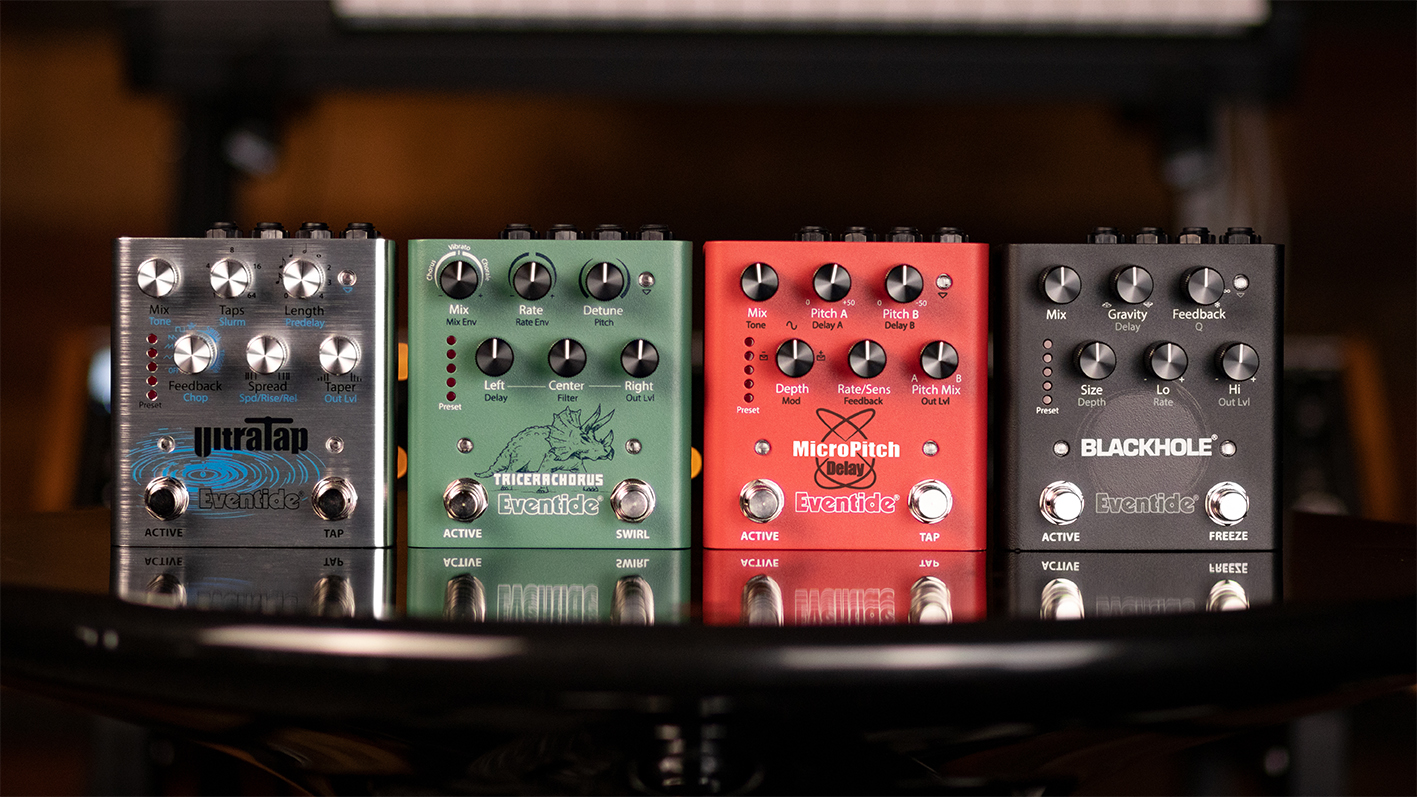
Eventide’s brand is synonymous with world-class audio technology that gives producers and musicians the tools they need to exercise their creativity. From iconic studio processors and rackmount effects to powerful pedals and plugins, their products have defined the sound of the past 50 years.
Eventide’s dot9 effects pedals and stompboxes harness the power of the legendary effects units upon which they built their brand. The five decades of research and development that have gone into prestigious products such as Eventide’s Ultra-Harmonizer have been drawn upon in designing this collection of unique pedals.
The dot9 pedal family offers producers and guitarists some of the most creative and advanced effects available today, in a compact and easy-to-use package. You can also bring these hardware pedals seamlessly into your digital workflow with the Eventide Device Manager, allowing music makers to control their pedals through their computer or laptop, accessing hundreds of custom-designed presets that can be loaded at the click of a button.
Blackhole
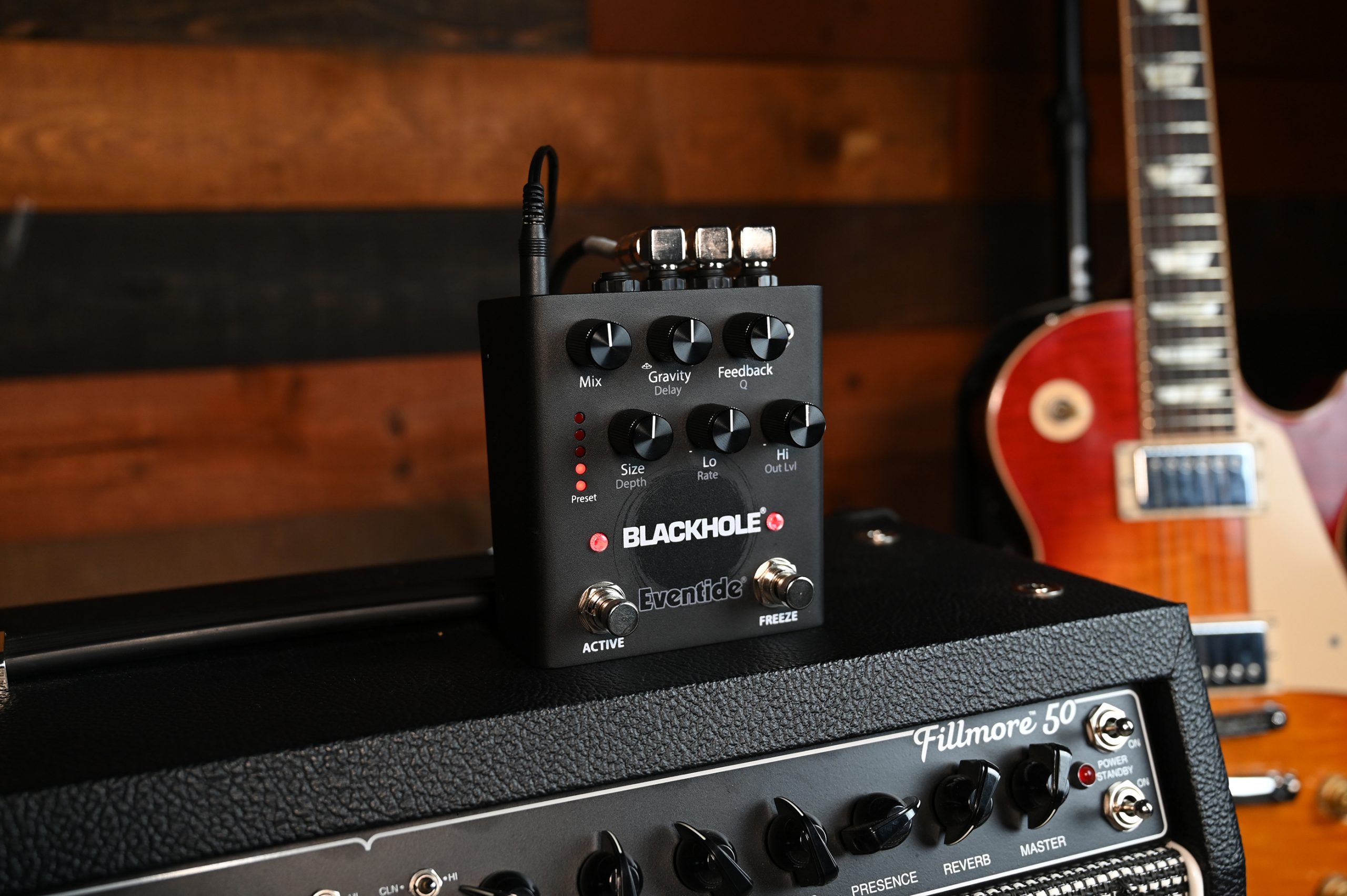
Eventide’s Blackhole pedal makes use of a proprietary algorithm first used in Eventide’s DSP 4000 Ultra-Harmonizer, a phenomenal outboard effects processor found in countless pro-level studios. They’re calling it Blackhole for good reason: the reverb produced by this pedal is downright extraterrestrial, and the algorithm that powers it can send your sounds straight into outer space.
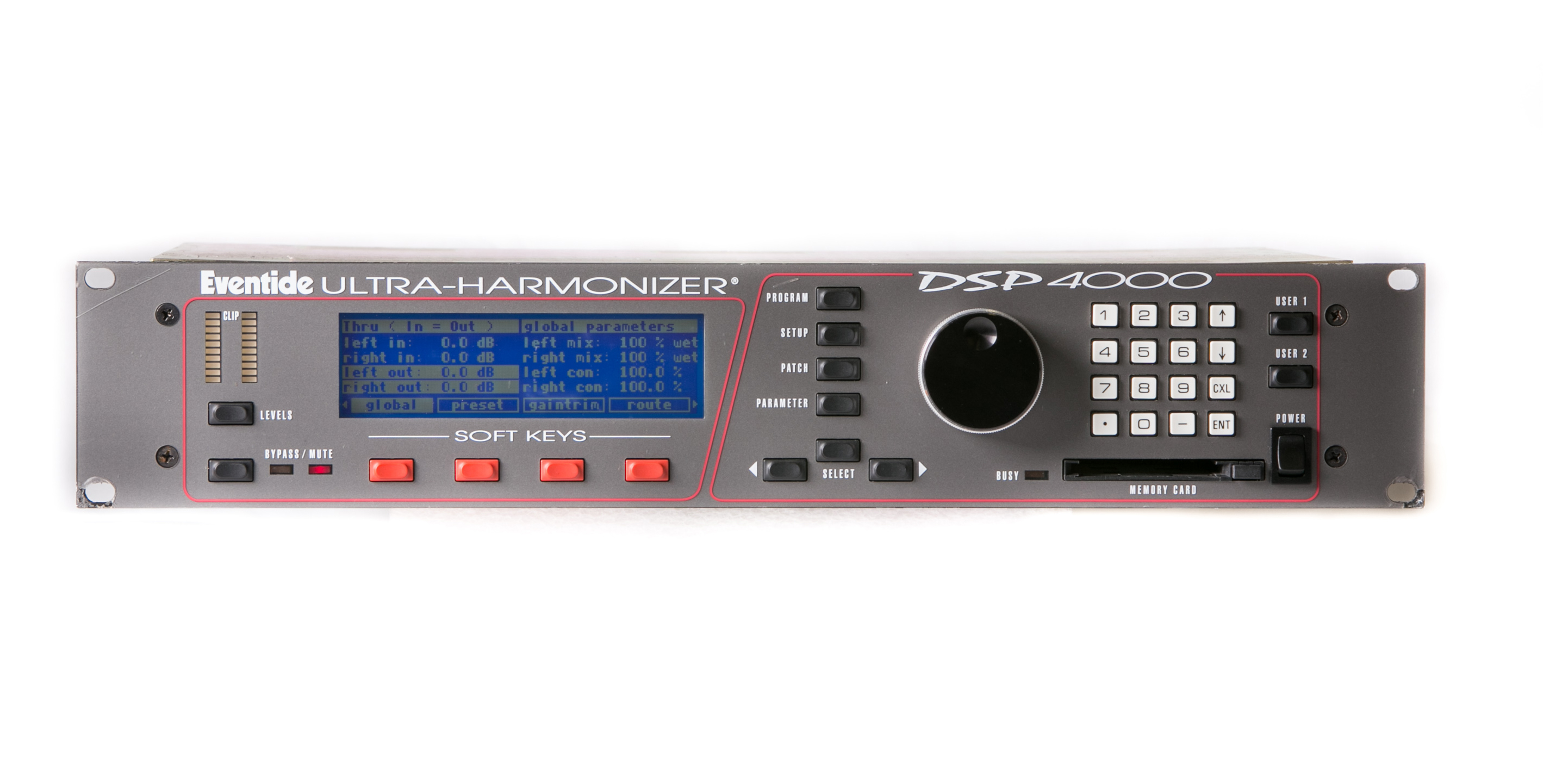
Capable of producing reverb that’s way bigger than the average room and hall settings on a typical pedal, the Blackhole can create an effect that sounds like a cathedral, a turbine hall, or even another dimension altogether. It’s no surprise that this is the must-have effect for any guitarist, synth player or producer looking to produce widescreen ambient soundscapes.
The Blackhole strikes the perfect balance between offering a detailed level of control to the user and providing an intuitive interface that can be operated with ease. The reverb’s 10 parameters can be manipulated using the onboard tone controls, or using the Eventide Device Manager software that comes bundled with the unit. There’s five onboard presets available, with an additional 127 accessible via MIDI or the Eventide Device Manager. To top it all off, the pedal has a dedicated Freeze button to hold the reverb infinitely, allowing you to layer and play alongside.
Micropitch
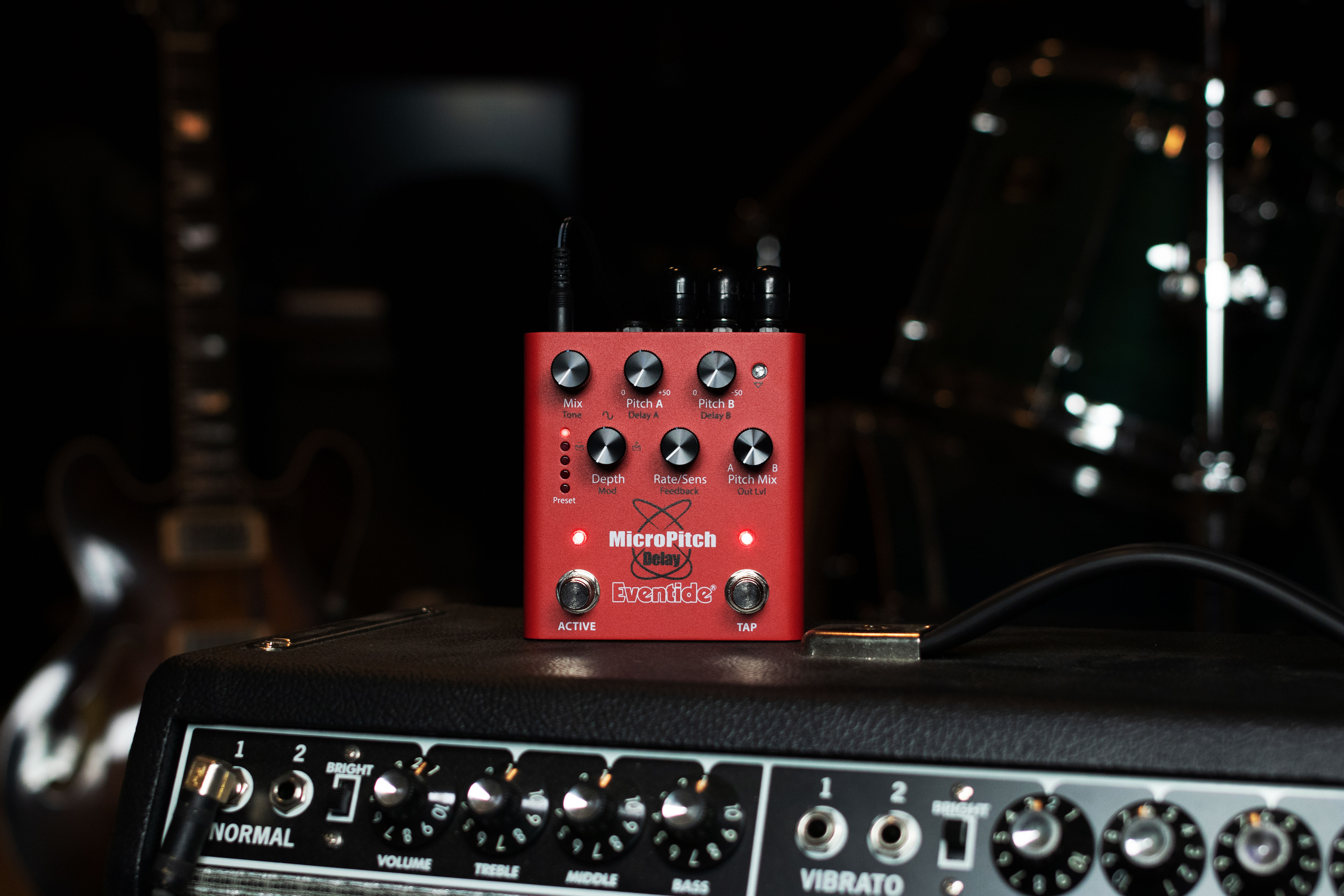
Micro pitch-shifting has been a mainstay of audio production and musical performance since it was first introduced within the legendary H910 in 1975. Engineers found that the unstable clock in the H910 lead to tiny flickers between pitch ratios and that if they combined two of these units, they could achieve a rich stereo spread effect. The H949 then cemented these abilities by providing a rock-solid clock and the ability to control these small and precise deviations in pitch.
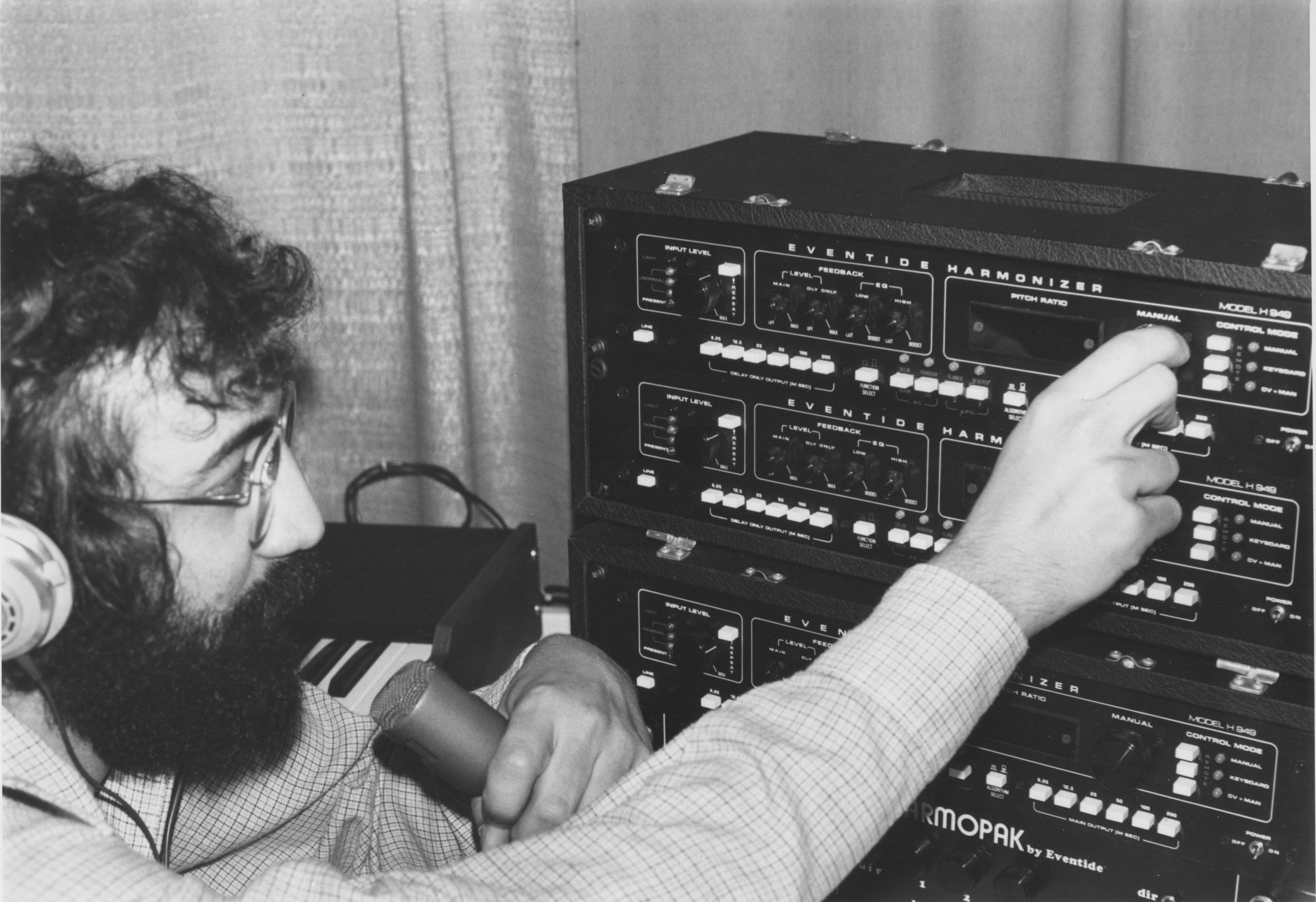
The MicroPitch Delay algorithm was introduced by Eventide within their H3000 Harmonizer, affirming its status as one of the most iconic effects in music production, relied on to thicken sounds by generations of producers. For a number of years, this effect was only available to those working in expensive studios.
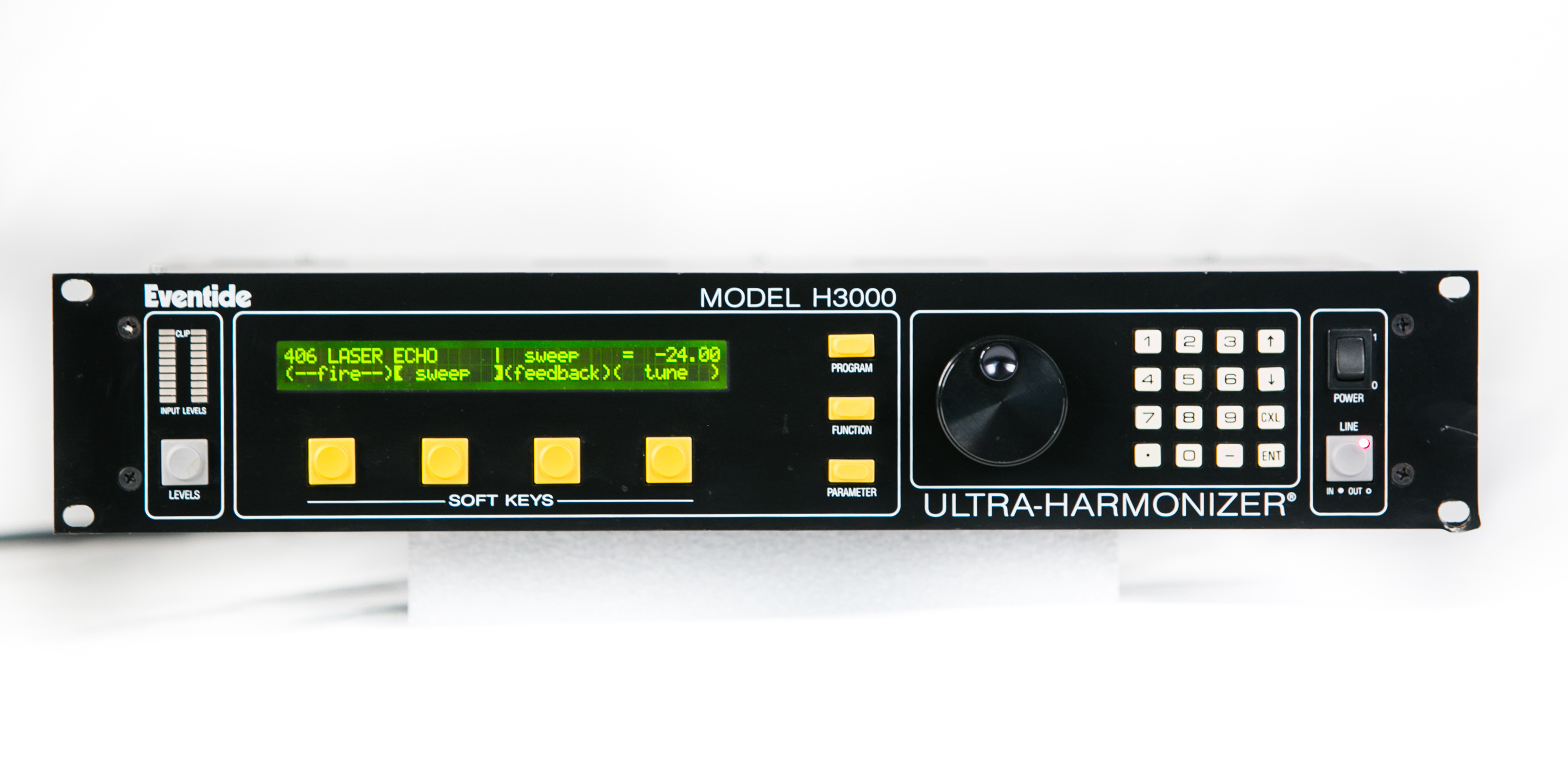
Today, Eventide has made the MicroPitch available to all in a compact form stompbox pedal. With two new pitch modulation envelopes, and an added 1000ms of delay per voice, the dedicated MicroPitch pedal offers even more capability than Eventide’s flagship multi-effects pedal, the H9.
This dual pitch-shifted delay pedal offers producers detuning and modulation capabilities that create a lush, buttery and warm sound. It’s perfect for subtly thickening and widening sounds and giving them extra body, creating a chorus-type effect that’ll enrich any sound source from guitar, to synth, to vocals and more. Using MicroPitch’s intuitive controls, you can gently colour your signal or crank it up to create out-there effects and uniquely creative sounds.
Ultratap

When forty years worth of work goes into anything, you know it’s the business. Eventide’s UltraTap builds on four decades of development to produce one of the most advanced delay pedals available today. Their efforts began in 1981, when Eventide started developing the Multitap and Digiplex delay algorithms for their SP2016 modular effects processor, offering producers levels of complexity in their delays that were previously unheard of. These laid the foundations for UltraTap, a delay algorithm found in the legendary H3000 and used on tons of iconic recordings.
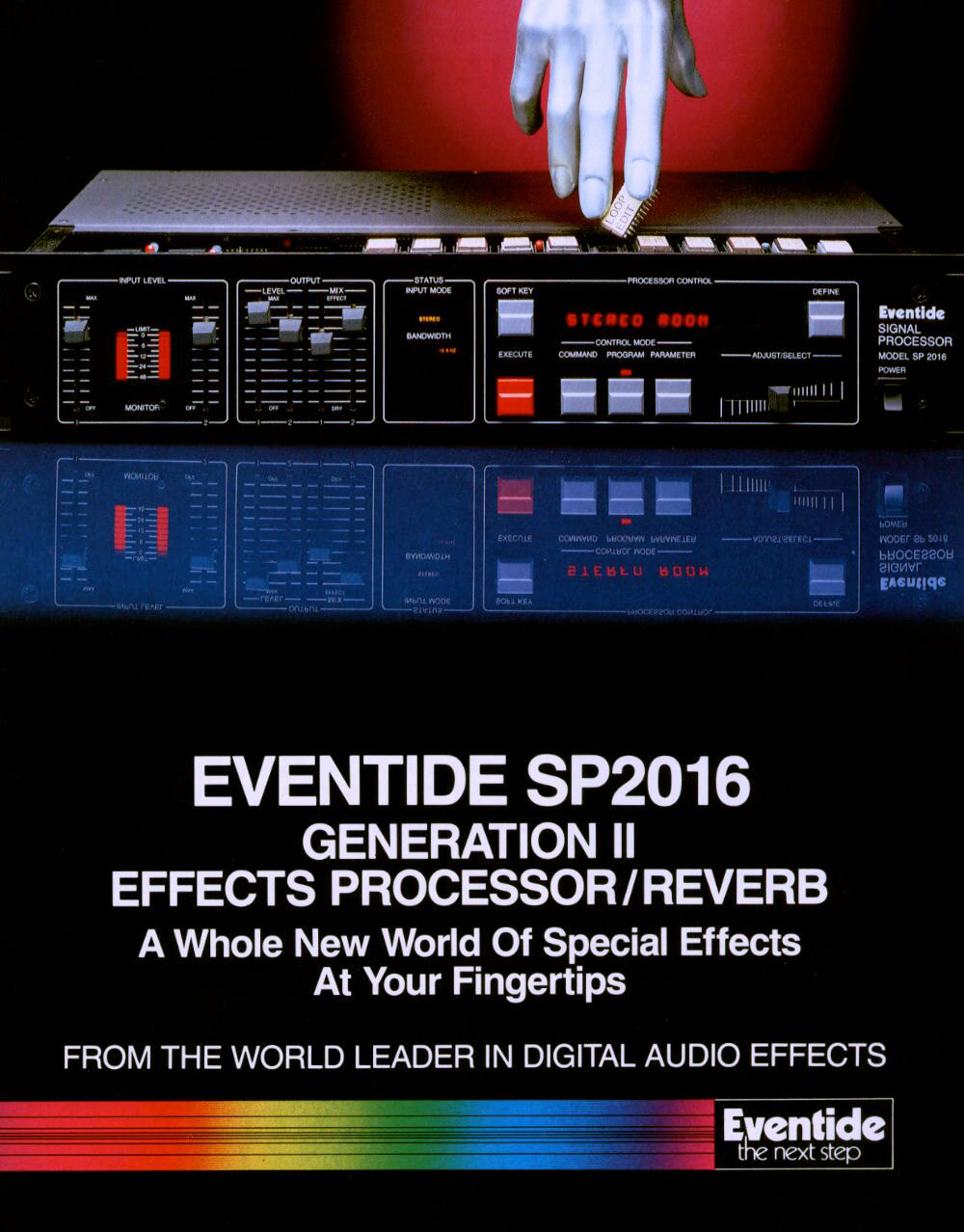
With the UltraTap pedal, Eventide are taking the staggeringly powerful functionality of their UltraTap algorithm to a new level and presenting it in a compact, easy-to-use package. The UltraTap is able to produce up to 64 taps of delay, meaning that complex rhythmic delay effects and multi-tap patterns can be achieved with ease. The pedal’s Slurm function even lets producers create reverb-style effects through blending taps together and adding modulation.
The tone of the delay can be shaped through a range of effects that includes tremolo, gating and auto-swell. The rhythmic arrangement of the taps then can be manipulated with Spread and Taper controls. These deep and powerful controls, in combination with Eventide’s innovative delay algorithms, makes UltraTap one of the most capable and creative delay pedals available today.
Tricerachorus
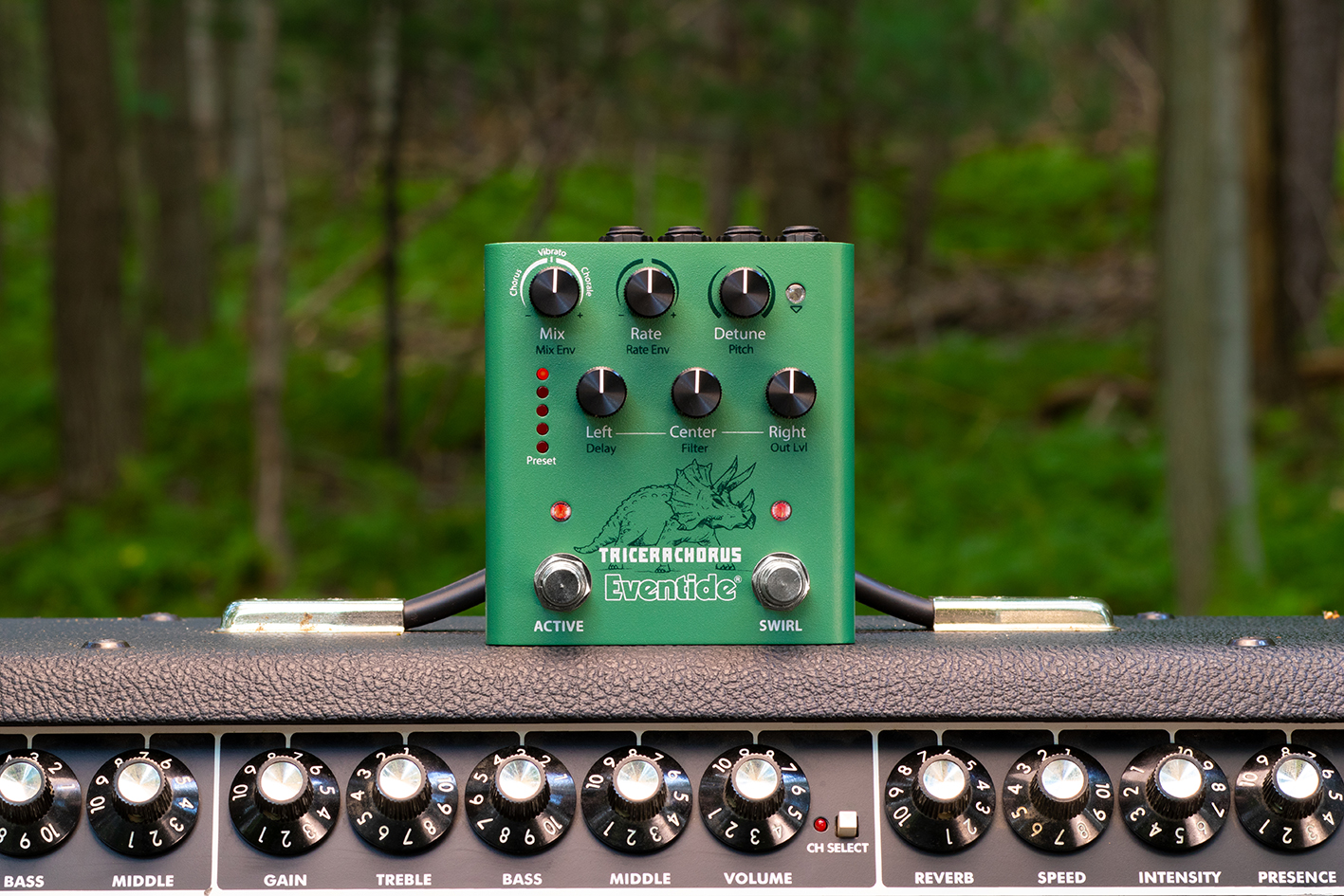
They say good things come in threes, and the Tricerachorus is no exception. Built around three chorus voices and offering three unique chorus effects, this pedal is inspired by the classic Tri-Stereo choruses that brought smooth, rich tones to so many quintessential tunes from the ‘70s and ‘80s.
The sound of the Tricerachorus is truly unique, thanks to a sonic architecture that pairs a vintage Bucket Brigade-esque sound with Eventide’s MicroPitch detuning algorithm. The pedal uses the Micropitch to detune the left and right chorus signals in opposite directions, creating a richness and width that spans the stereo field. With a three-phase LFO to modulate delay times, the Tricerachorus is capable of organic-sounding effects that will inject life into any incoming signal.
The pedal’s three modes give music makers a depth of control over their sound. The first mode, Chorus, instantly gives music makers an classic chorus effect, which can be relied upon to produce a lush, pleasing sound. Chorale, the second, dials things up a notch for an effect with more movement and vibrancy, recalling the vintage Tri-Stereo choruses we all know and love. Finally, we have Vibrato mode, which produces an expressive, pulsating vibrato effect. If that wasn’t enough sonic manipulation, you can hit the Tricerachorus’s Swirl button to lay on stereo phase-shifting and kaleidoscopic flanging and phasing effects.
You can read Music Radar’s review of each of the four pedals here: Blackhole, Micropitch, Ultratap and Tricerachorus (coming soon).
To find out more about dot9 and the rest of Eventide’s legendary pedal range, visit their website.
Want all the hottest music and gear news, reviews, deals, features and more, direct to your inbox? Sign up here.